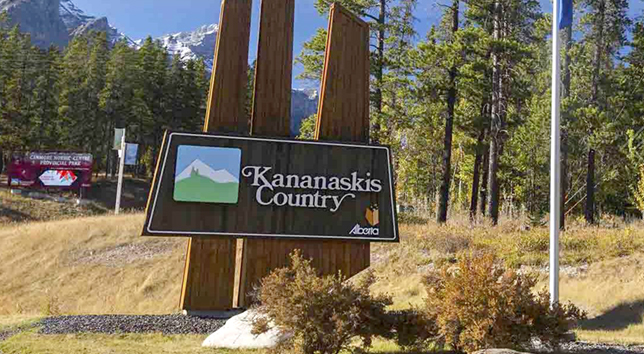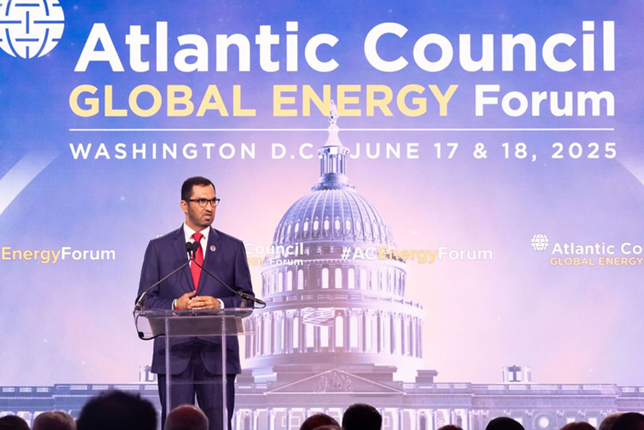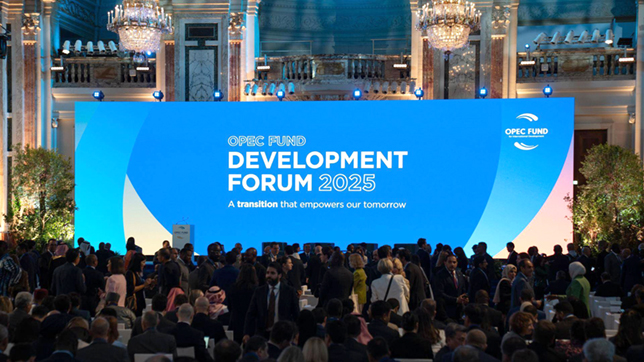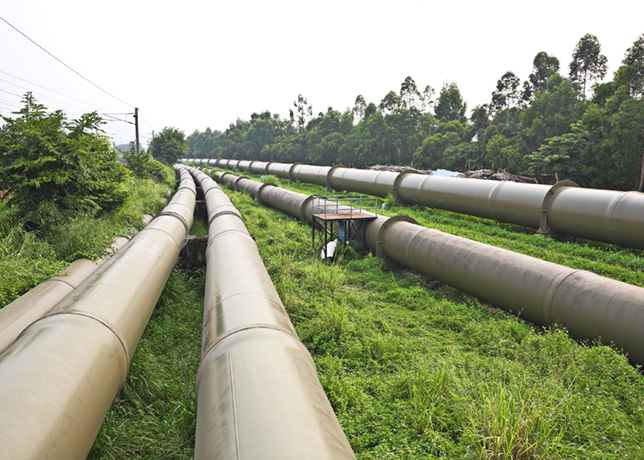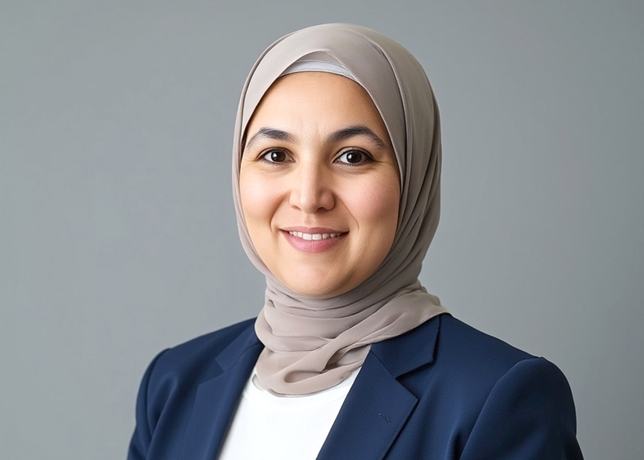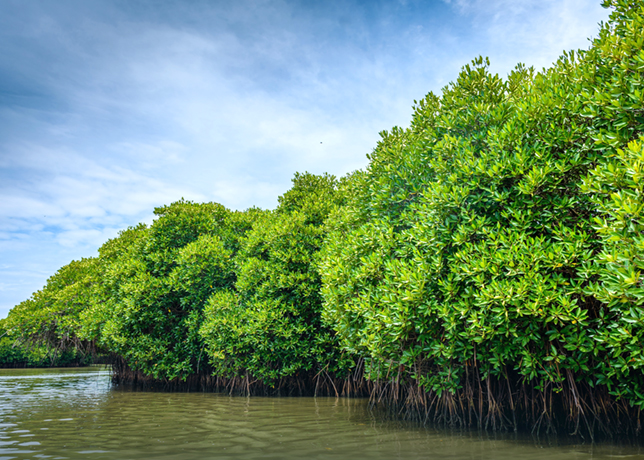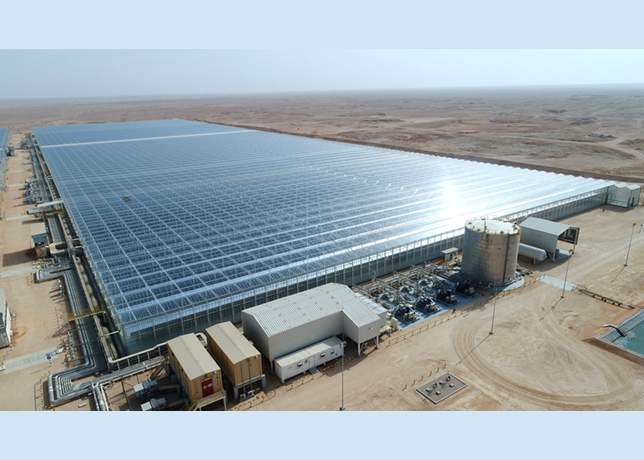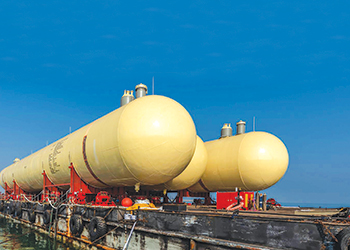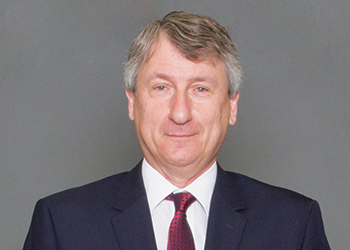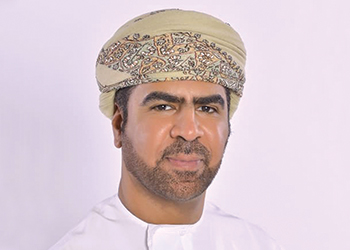
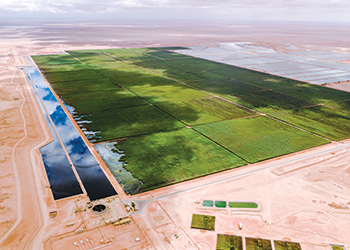 The Nimr water treatment plant processes over 110,000 cu m per day
The Nimr water treatment plant processes over 110,000 cu m per day
Despite the Covid-19 pandemic blunting progress in 2020, Oman’s oil and gas sector has made major headway in oil recovery, downstream investments and renewables indicating a strong bounceback from the crisis
The year 2019 was a bumper period for Oman’s oil and gas industry when Petroleum Development Oman (PDO), the sultanate’s biggest oil and gas producer, achieved a record production of 1.210 million barrels of oil equivalent per day (boepd), bolstered by a strong uptick in condensate output.
PDO reported the highest black oil production since 2005, averaging 616,380 barrels per day (bpd) compared to 610,170 bpd in 2018. Its 2019 production of gas averaged 62.2 million cu m per day, which was slightly lower from the 2018 average of 64.8 million cu m per day. However, condensate output rose by 44 per cent year-on-year, surging to 94,000 barrels per day (bpd), up from around 65,300 bpd in 2018.
According to National Centre for Statistics and Information (NCSI), Oman's total oil production, including condensates, stood at 124.1 million barrels until the end of April 2020. Of this, crude oil production was up by 3.4 per cent at 106.19 million barrels while condensates production rose by 30.3 per cent to touch 17.9 million barrels, an Oman News Agency reported.
The Sultanate recorded a daily average crude oil production of 1.025 million barrels at the end of April 2020, against 970,500 barrels over the same period of 2019, the NCSI added.
Meanwhile, Oman’s natural gas production and imports rose 1.3 per cent to 14.756 billion cu m at the end of April 2020, from 14.564 billion cu m for the same period of 2019. Of this, non-associated gas and imports rose by 2 per cent to 12.132 billion cu m and associated gas production fell 1.6 per cent to 2.624 billion cu m, the NCSI report said.
.jpg) |
The Rabab Harweel Integrated Project is the largest development in |
All in all, things turned out very well for Oman. However, 2020 might be slightly different, a bit challenging to say the least.
Oil and gas remains crucial to the Sultanate’s economy with revenues from the hydrocarbons sector account for about 80 per cent of the national budget. But with plummeting oil prices and the devastating business impact of the Covid-19 pandemic, the country is looking hard to find ways to balance the deficit, including cutting spending and possible financial aid from other Gulf states. Oman’s budget deficit is forecast to swell to 17 per cent of gross domestic product in 2020.
In the long run, Oman aims to diversify its economy away from its dependence on oil and gas exports, and open the country up to private sector investment under its Vision 2040. It even foster ambitions of lifting the renewable energy mix by 10 per cent.
Oman is the largest oil and natural gas producer in the Middle East outside the Organisation of the Petroleum Exporting Countries (Opec) with a maximum production capacity of 1 million barrels per day (bpd). In April this year, it announced to cut its May to July production by 23 per cent, or 201,000 bpd, as part of an agreement by Opec and its allies (Opec+).
But the country isn’t pleased with Opec+’s monthly adjustment production schedule and especially not during the current global crises, as it undermines market stability, Oman’s Oil Minister Mohammed Al-Rumhy has told S&P Global Platts. He said they would continue the cuts until December 31.
Oman is making efforts to sustain oil and gas production and increase hydrocarbons reserves. Last year, Al-Rumhy announced investments of between $10-$15 billion over the next three years, mostly concentrated in the petrochemical industries.
State-owned PDO said it would ramp up production to 700,000 bpd by 2024, buoyed by the completion of its largest enhanced oil recovery (EOR) project at Rabab Harweel.
The Rabab Harweel Integrated Project (RHIP) represents the largest reserve addition (more than 500 million boepd) in PDO’s history and will deliver 76,000 bpd of crude once it reaches plateau. This world-class, highly technical and complex project was delivered two months ahead of schedule and over $1 billion under budget.
In 2019, PDO reduced the unit finding cost (UFC) of oil to $0.9 per barrel of oil equivalent. The company was also successful in booking 136 million barrels of contingent oil resources, and 1.1 trillion cu ft of commercial contingent resource of non-associated gas volumes in some of the most testing terrain in the world.
The firm expects another key EOR project to contribute to its 2024 crude output target. The Yibal Khuff project is set to come on stream in February 2021, although it was initially scheduled to be finished in 2019. Yibal Khuff will deliver 5 million cu m per day of gas and around 10,000 bpd of crude.
PDO said it expects 25pc of its production to come from EOR projects by 2025, but with oil prices down by more than a third since the start of the year, this plan could change.
Furthermore, PDO drilled 26 wells in 2019. The production from exploration wells was approximately 1,250 barrels per day, with further output expected from new exploration wells coming on stream during 2020.
Early this year, PDO drilled the 1,000th well at Marmul–Rahab–Thuleilat–Qaharir (RTQ) cluster located in South Oman. MM-1000 was part of an accelerated programme to boost production by secondary recovery. Its delivery was doubly impressive as the well was commissioned in merely 16 hours from the rig move.
The Marmul field was first discovered in 1956, and was brought on stream in 1980 when the Main Oil Line was commissioned in South Oman. The cluster currently holds a significant portfolio of hydrocarbon volumes contributing an average of 81,600 barrels per day (bpd).
Around 500 more wells will be drilled in the coming few years in various fields in the cluster through the Marmul Polymer Phase 3 development and denser waterflood in-fill projects that will further boost production and add to the nation’s reserves.
Separately, Oman is making progress on the biggest oil-storage facility in the Middle East. The Ras Markaz Crude Oil Park, with an expected storage capacity of 200 million barrels, lies 966 km from the Strait of Hormuz and could provide an alternative for energy traders and exporters eager to avoid the waterway. Leasing the tanks would provide much needed extra revenue for Oman.
Oman Tank Terminal Company (OTTCO) has almost finished constructing eight tanks to store hold 5.7 million barrels of crude for a new refinery near the town of Duqm on the Arabian Sea. It’s now pushing ahead with others that could be used by oil companies and traders, according to two people with knowledge of the project. That would eventually increase Duqm’s capacity to at least 25 million barrels, according to OTTCO’s website.
The UAE port of Fujairah, the region’s largest hub with 14 million barrels of commercial crude-storage capacity, is less than 160 km from Hormuz.
In the gas sector, BP Oman plans to produce an additional 500 million cu ft of gas from Oman's Khazzan field, known as Ghazir, by the end of 2020, the state news agency said. Construction of facilities has nearly finished, Al Ojaili added, with 126 of 300 wells drilled.
Investment in the Ghazir project as of the end of the first quarter of the year stood at about $9.3 billion out of a total estimated at $16 billion.
Gas production from Khazzan project is currently up to one billion cu ft (bcf), in addition to around 35,000 barrels per day of gas condensate (light oil), BP Oman Chairman Eng Yousef bin Mohammed Al-Ojaili said
BP Oman is planning to develop its business towards the production of 10.5 trillion cu ft from renewable gas resources at Block 61 (Khazzan and Ghazeer fields).
PETROCHEMICALS
 |
Restucci celebrating the drilling of the 1,000th well at |
In 2018, under a major integration plan, nine state-owned upstream and downstream companies were merged under a new entity named ‘OQ’. In May this year, Oxea and Oman Trading International (OTI) were finally integrated into the new company, following six other firms under the leadership of Oman Oil Company (OOC), Oman Oil Refineries and Petroleum Industries Company (Orpic).
OQ Group CEO Musab Al Mahruqi said the aim with this new company is to develop a unique integrated model for an energy company that delivers sustainability and business excellence. He said there was an ambitious growth plan to double EBITDA in the next 10 years and investing over $28 billion in new projects, in addition to investment in alternative energy, retail, and gas-to-plastics projects.
OQ meanwhile has also announced the commissioning of its signature investment, the Liwa Plastics Industries Complex (LPIC), being set up at an investment of $6.7 billion. The project located within Sohar Port will firmly put the Sultanate on the global petrochemicals map.
LPIC’s product portfolio will include linear Low-Density Polyethylene (LLDPE), High-Density Polyethylene (HDPE) and Polypropylene (PP). At full capacity, Liwa Plastics will boost OQ’s production of polyethylene (PE) and polypropylene to 1.4 million tonnes. This will be the first time for PE to be produced in Oman.
In addition to maximising value addition to the nation’s hydrocarbon wealth, the mega venture will also spawn investments in a wide array of downstream activities.
RENEWABLES
As part of its transition to a full-fledged energy company, PDO is placing a greater emphasis on renewables such as solar and wind. It is also continuing to deploy and trial technologies to improve its energy and water management, and reduce flaring and greenhouse gas emissions, it said.
The announcement comes notwithstanding Oman's decision to liquidate GlassPoint Solar company after the sharp fall in energy prices caused by the global economic slowdown because of the pandemic, Oman news agency said, citing a statement from State General Reserve Fund, which is a key shareholder in the company along with Royal Dutch Shell.
The US-based technology startup is billed as a pioneer in the use of solar energy for steam generation in heavy oil production.
It is a technology partner in the development of PDO’s Miraah project, a giant 1,021 MW solar farm currently in an advanced stage of implementation at the Amal field south of the country. At full capacity, it will feature a total of 36 glasshouse modules, covering an area of more than 360 football pitches.
In addition to its partnership with PDO, GlassPoint Solar had also signed a Memorandum of Understanding (MoU) with Occidental Oman in November 2018 for the development of a world-scale solar thermal energy, exceeding 2 gigawatts in capacity, at the Mukhaizna heavy oil field in the Sultanate.
A key milestone for PDO was the start of commercial operations at its landmark 100-MW Amin Photovoltaic Power Plant located near Nimr, approximately 300 km north east of Salalah.
The $94-million facility features 336,000 solar panels covering an area of 4 sq km and produces energy sufficient to power 15,000 homes. It would result in an annual CO2 emission reduction of more than 225,000 tonnes, the equivalent to taking 23,000 cars off the road.
The project is known as one of the world's first utility scale solar projects to have an oil and gas company as the sole buyer of electricity.
Amin independent power project (IPP) is also the first utility scale PV power plant in Oman and has one of world’s lowest tariff at the time of award for such a project, which spans 23 years.
The installation was built and commissioned in record time, just under 12 months after signing the engineering, procurement and construction (EPC) contract, providing initial power into PDOs electrical grid in March 2020.
PDO Managing Director Raoul Restucci said the Amin power plant represents an excellent example of Oman's outstanding potential in renewable energy.
'Indeed, we look forward to continuing to make further progress in our plans to gradually increase the utilisation of renewable resources in our activities and are currently in the process of evaluating a number of exciting opportunities including wind power installations in our southern locations.'
Additionally, PDO is also implementing several residential power installations and has awarded Belgium-headquartered Tractebel-Engie a one-year feasibility study contract to for deploying a 50 MW capacity wind power project.
Another project includes a domestic solar installation project covering 580 villas with a capacity of 10 KW per villa at its under-construction residential township Ras Al Hamra. The project is at the engineering stage. Furthermore, a 1-MWp ground-mounted solar power project that will power 164 homes at Mina Alfahal is currently at the tendering stage.
In another location 300 km west of Muscat, the 500-MW Ibri II project is being developed as Oman’s largest utility-scale PV plant to date. The $400-million IPP project is being developed on a BOO (build, own, operate) basis by a consortium of ACWA Power, Gulf Investment Corporation (GIC) and the Alternative Energy Projects Company (AEPC).
Ibri II is expected to come online in Q2 2021 and will supply clean power to state-owned utility Oman Power and Water Procurement Company (OPWP) under a 15-year contract. It will generate roughly 1,300 GWh annually, which is enough to power an estimated 33,000 homes and offset 340,000 tonnes of carbon dioxide emissions per year.
Sungrow, the global leading inverter solution supplier for renewables, has announced it will supply 1500V SG250HX inverter solutions to the Ibri II project in Oman. The solution features 12 MPPTs with maximum efficiency of 99 per cent and enables flexible block design allowing for up to 6.75 MW blocks. Compatible with bi-facial modules and tracking systems, the solution can significantly maximise ROI for a PV project.
IN-COUNTRY VALUE (ICV)
Building on its contribution to In-Country Value (ICV) development, PDO’s strategies helped ensure the local retention of cumulatively around $615 million in contract value last year. It also delivered 11 manufacturing and services facilities in 2019, creating around 200 jobs for locals.
Early this year, the biggest producer of oil and gas in the country signed a $26 million contract with Oman Engineering Procurement & Construction (OmEPC) — a joint partnership between four Omani SMEs, including Value Engineering Centre (VEC), Hamad Engineering Services (HES), Precision Engineering Consultancy (PEC) and Rock International.
Mohammed Al Said, OmEPC Chairman, said: 'OmEPC is a result of continuous ICV efforts by PDO to create meaningful employment for Omanis. With this contract, PDO has granted OmEPC an opening not only for employment of Omanis, but also development and growth of local EPC capabilities and capacity beyond the boundaries of PDO’s operations.'
PDO has played a significant role in the industry’s ICV strategy since its launch six years ago, leading 43 out of the 53 opportunities. Currently 28 opportunities have been realised through a wide range of activities including the establishment of Omani factories, workshops and repair facilities offering in-country engineering services, equipment and materials to the oil and gas sector.
In another development, a new industrial city will take shape in Marmul, 800 km from Muscat. The city will help accelerate the development of local manufacturing capabilities while expanding supply chains, and is expected to focus mainly on attracting investments in the oil and gas sector. An MoU in this regards was signed by the Public Establishment for Industrial Estates (Madayn) with PDO.
















